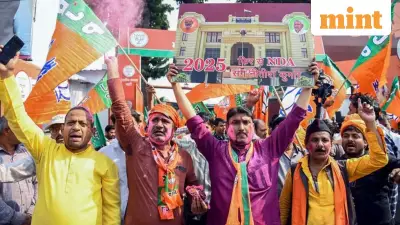
The Supreme Court of India has taken a serious stance on the conditions of roadside dhabas and the overall state of national highways across the country. In a significant move, the apex court has formally requested a detailed status report from both the National Highways Authority of India (NHAI) and the Ministry of Road Transport and Highways.
Judicial Intervention for Traveler Safety
This judicial action comes as a response to growing concerns about the poor facilities and potentially hazardous conditions at many roadside eateries and rest stops that serve millions of travelers daily. The Supreme Court's directive emphasizes the urgent need to assess and improve the basic amenities and safety standards along India's extensive highway network.
The bench, comprising Justice Hima Kohli and Justice Ahsanuddin Amanullah, has given clear instructions for the comprehensive report that must address multiple aspects of highway infrastructure and services. This intervention highlights the judiciary's proactive approach to ensuring public safety and proper facilities for all road users.
Scope of the Required Report
The Supreme Court has outlined specific areas that the report must cover, demonstrating the comprehensive nature of this assessment. The NHAI and Ministry have been directed to provide detailed information about the current state of facilities available to highway travelers, with particular focus on roadside dhabas.
The report needs to include critical details about the number and distribution of functional dhabas along various national highways, their operational conditions, and the basic amenities they provide to travelers. This includes sanitation facilities, food safety standards, parking arrangements, and overall maintenance quality.
Furthermore, the court has asked for information about the mechanisms currently in place for monitoring and maintaining these facilities. This includes inspection protocols, grievance redressal systems for travelers, and any existing quality control measures that ensure these roadside establishments meet minimum standards of safety and hygiene.
Broader Highway Infrastructure Assessment
Beyond the specific focus on dhabas, the Supreme Court has also sought a broader evaluation of highway conditions across India. This includes the status of essential traveler amenities such as rest areas, emergency services, and medical facilities along major transportation routes.
The court has specifically asked about the implementation status of previously proposed measures to improve highway safety and traveler comfort. This comprehensive approach indicates the judiciary's understanding that safe travel infrastructure involves multiple interconnected elements beyond just the road surface itself.
The directive also covers aspects like road maintenance quality, signage visibility, emergency response systems, and the availability of basic facilities for different types of travelers, including families, commercial drivers, and solo travelers.
Implications and Expected Outcomes
This Supreme Court initiative represents a significant step toward systematic improvement of India's highway infrastructure. By compelling the concerned authorities to provide a detailed status report, the court is ensuring that proper attention is given to this crucial aspect of public infrastructure that affects millions of citizens.
The move is expected to lead to concrete action plans for upgrading facilities and implementing stricter quality controls for highway amenities. It also signals the importance of regular monitoring and maintenance of these facilities rather than one-time improvements.
Legal experts view this as part of the judiciary's broader role in ensuring that public infrastructure meets acceptable standards of safety and convenience. The collected data and subsequent actions could potentially transform the highway travel experience for ordinary Indians and commercial transporters alike.
The Supreme Court has set a specific timeline for submitting this comprehensive report, though the exact deadline was not specified in available information. Both NHAI and the Ministry are expected to coordinate their efforts to provide a thorough assessment that will form the basis for future improvements in highway infrastructure and traveler amenities across the country.





